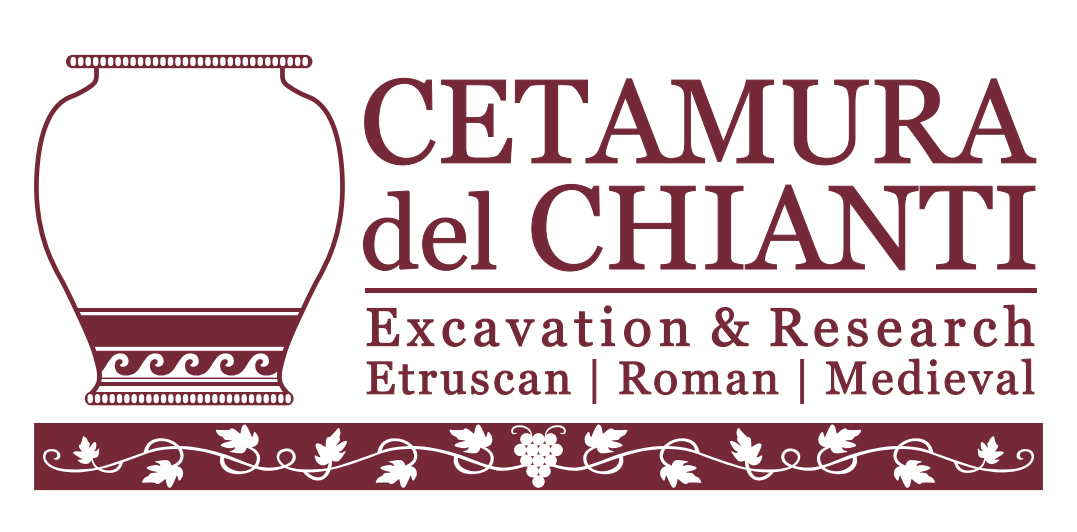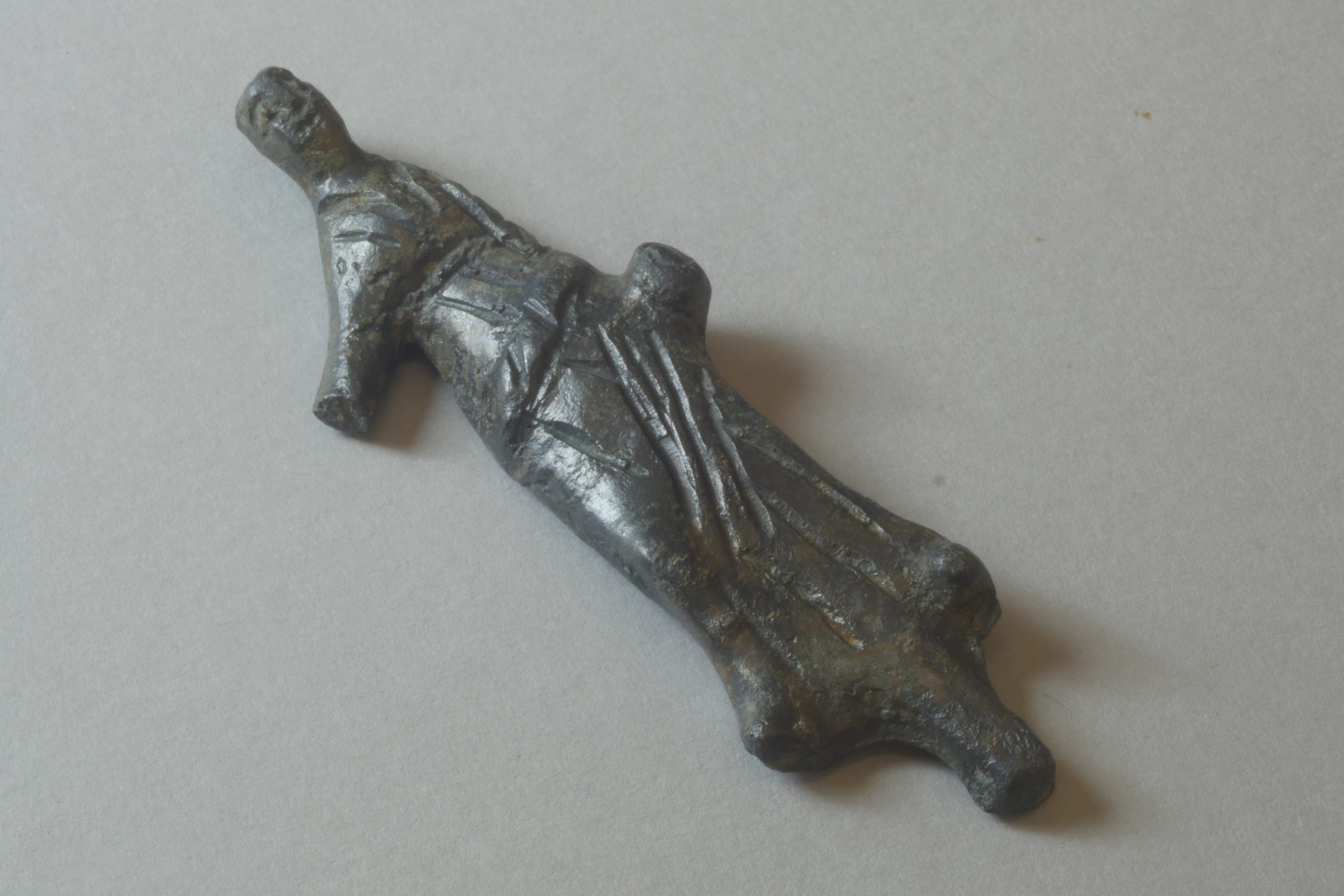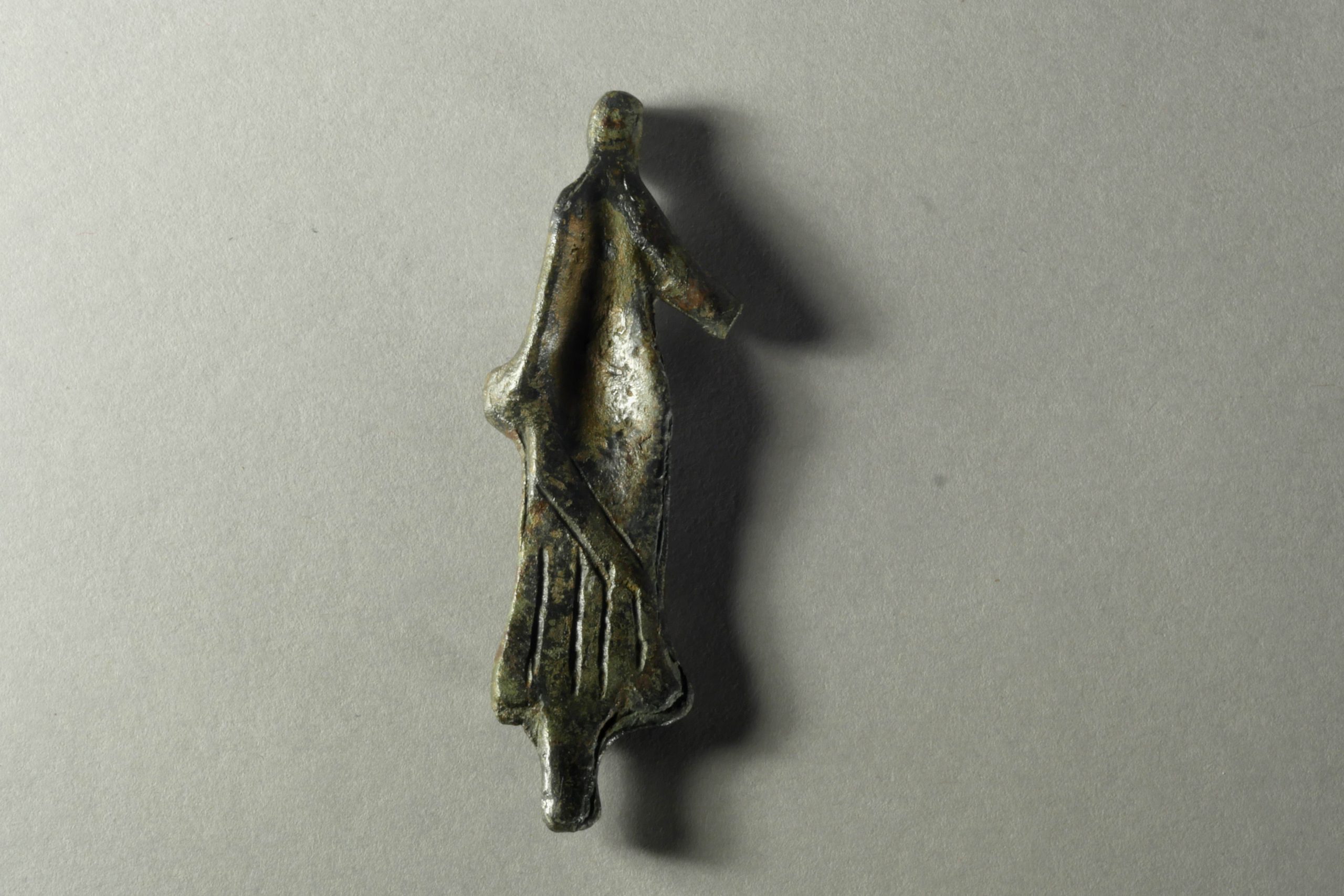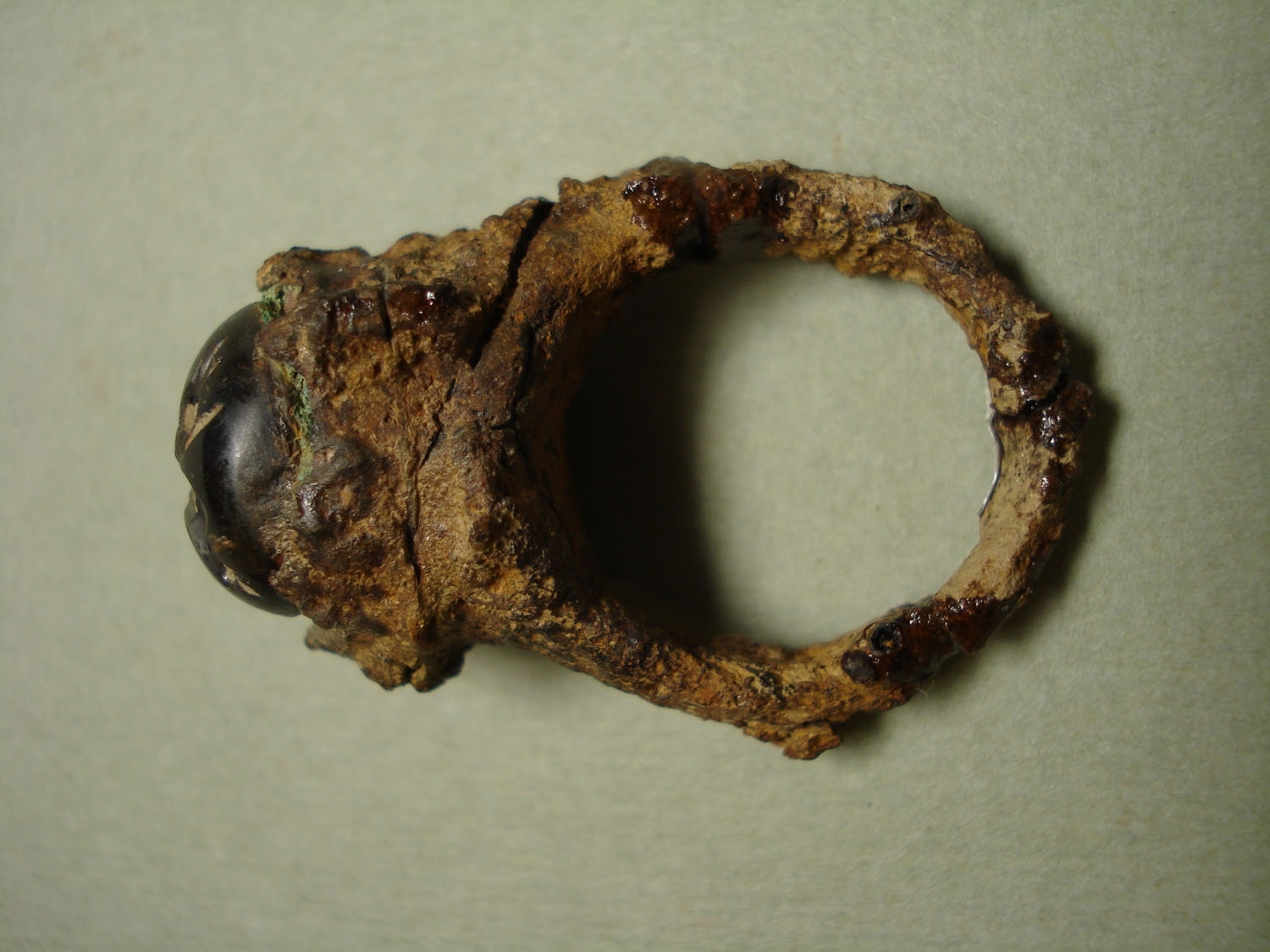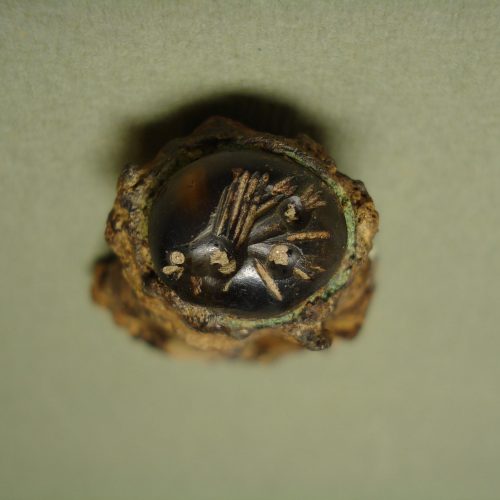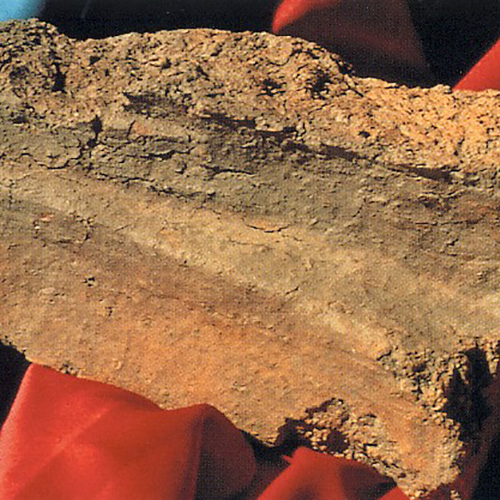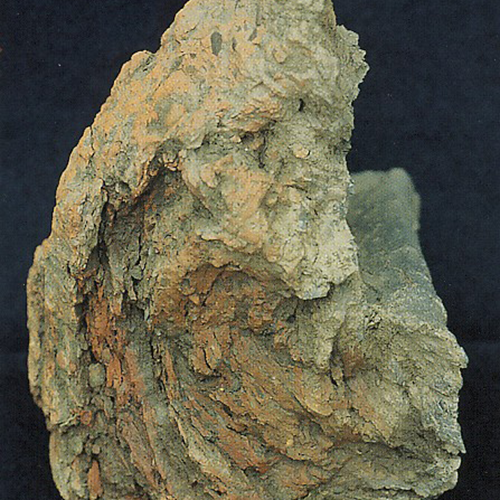ITEMS FROM CETAMURA
Artifact Corner
Hundreds of artifacts from Cetamura have been shown in exhibitions (Cetamura Antica, Sanctuary of the Etruscan Artisans, Wells of Wonders) and are in the planning for display at the Museo Civico Alle Origini del Chianti at Gaiole in Chianti. The Artifact Corner presents some of the most interesting pieces excavated at Cetamura that will eventually go in the museum
Etruscan bronze female statuette
(Cetamura inventory C-15-250; height 8.5 cm)
This small cast bronze figurine shows a female dressed in a tunic covered by a mantle [a., b.], with her hands extended in the pose of someone making an offering. The proper right hand is missing but almost certainly was holding a patera (saucer) for pouring a libation in a manner typical for Etruscan votive statues offered to the gods. The figure is elongated and stylized, again as is typical of Etruscan votive bronzes, especially of the Late Etruscan period. It is almost flat, and on the back is even hollowed out.
The statuette dates to the third or second century BCE. It was found inside Well no. 2, where it was probably dropped in as an offering.
For more information, see the catalogue Wells of Wonders, cat. no. 174.
Iron ring with carved cornelian stone
(Cetamura inventory C-07-164; stone measures 1,5 x 1,1 cm)
The tiny stone was engraved with a drill to create a design of three birds’ heads flanked by outspread wings. The stone is set into a bronze frame (now corroded and thus greenish in color), set in turn into an iron finger ring [c. d.]. The stone has been identified as chalcedony, of the variant cornelian, having a shiny reddish black coloration that is not original.
The object was found in one of the chambers of the sanctuary Building L (Room 3), and was an offerting to the gods. By context and style, it dates to the 2nd century BCE.
For more information, see the catalogue Sanctuary of the Etruscan Artisans, cat. no. 135.
Etruscan refractory bricks
(Cetamura inventory C-90-251 and C-90-252a.)
The two bricks [e., f.]were originally used as part of the architecture of the Etruscan kiln, Structure K but were found discarded (or more likely set aside for re-use) on a stone platform of the kiln workshop. They are made of a very dense paste consisting of ground up ceramics, sandstone temper and fresh clay, meant to be able to withstand high temperatures and thus able to be used and reused in a kiln fire that sometimes reached 1000 degrees Fahrenheit.
The fire bricks have a standard length of 33-34 cm, indicating they were made in a mold, probably utilizing a standard Etruscan “foot” at Cetamura, in the third century BCE. They have a curious L-shaped profile, so far without comparison in the ancient world. None have been found in place in the Etruscan kiln, which seems to be preserved only in its rectangular foundation. Was this strange shape somehow built into the roof of the kiln?
For more information, see the catalogue Cetamura Antica, cat. nos. 8-9.
